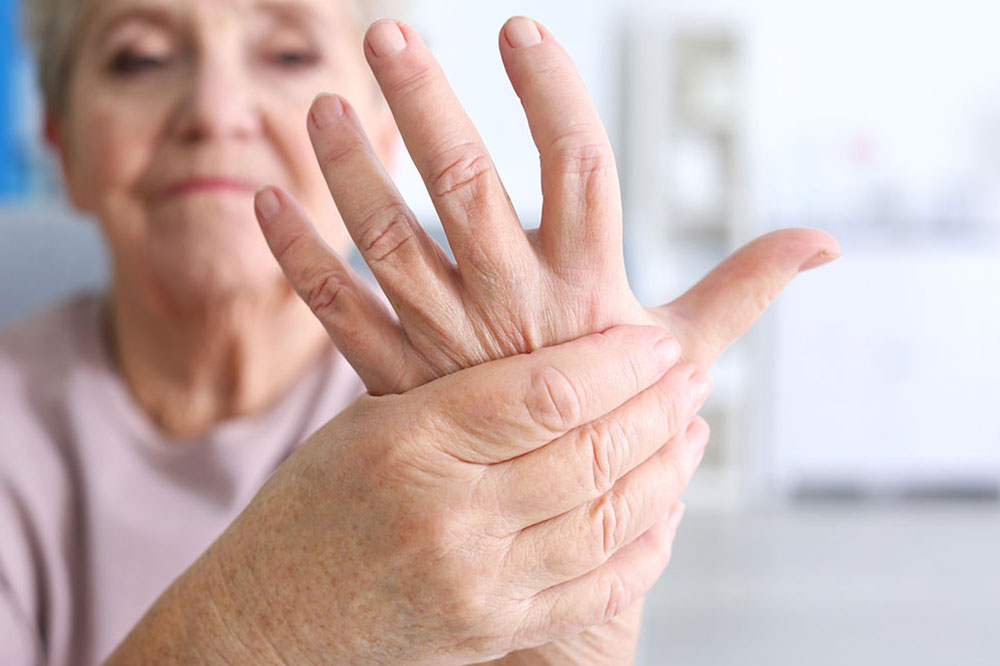
Rheumatoid arthritis – Early signs, causes, and more
Inflammation is our body’s natural response to fight an infection. Rheumatoid Arthritis is an autoimmune condition when our body causes inflammation unnecessarily or by mistake. The inflammation causes pain and stiffness in the affected joints. When the inflammation begins to reduce, the joints may be unable to return to their proper position, causing pain and instability, and difficulty in using those joints. This article explains the symptoms, causes, and remedies for Rheumatoid Arthritis.
Early signs and symptoms
Rheumatoid Arthritis (RA) commonly affects the joints in our hands, wrists, and knees and, in rare cases, can affect tissues in our hearts, lungs, and eyes. Like any inflammatory condition, symptoms can become severe and improve in phases, known as flare-ups and remissions. Common early warning signs and symptoms of RA include:
- Pain and stiffness after being in the same position for a long time
- Tenderness, swelling, and redness in the joints
- Lack of appetite
- Joint pain and stiffness in one side of the body or both sides
- Fever
- Weight Loss
- Fatigue
Major causes
- Aging is one of the most common causes of RA, and women are at higher risk than men. Research also suggests a link between genes and RA
- The inability to manage average body weight is another major cause
- RA is also high among those whose regular meals contain more red meat and fewer fruits and vegetables
- Lo ng-term stress is also identified as a cause and risk of RA
Treatment options
Oral prescriptions are the most effective treatment for RA to stop its progression, reduce pain and prevent deformity. Doctors prescribe painkillers to manage RA. Some can also be administered directly to the joints if the pain is severe.
Physical therapy is an integral part of RA treatment, as it can help your muscles, joints, and bones be flexible and strong.
The most common surgical procedures for RA include:
- Joint replacement to wholly or partially replace the damaged joints
- Arthrodesis, where surgeons remove the damaged joint and fuse the bones mainly in fingers, toes, ankles, or wrists
- Synovectomy, where a doctor removes the membranes lining a joint to improve flexibility,
Natural remedies
Self-management in the form of regular exercise, a healthy plant-based meal plan, and weight management are critical remedies for RA. Warm baths, hot and cold compresses can help you find relief from pain and stiffness. Moderate physical activity for about 150 minutes a week can help relax muscles and joints. For example, if your RA is triggered by stress, practice therapies like yoga, meditation, or visualization to manage stress.
Foods that improve the symptoms of Rheumatoid Arthritis
Foods that help reduce inflammation, supply essential nutrients for the body, and contain antioxidants that help build immunity are the most suited for managing RA. Some of the best foods for RA include:
- Fatty fish like salmon, tuna, herring, and sardines
- Whole grains like oats, wheat, brown rice, and quinoa
- All vegetables except Nightshades
- All fruits
- Black beans, red kidney beans, and garbanzo
- Nuts like walnuts, pistachios, hazelnuts, and almonds
- Olive oil
- Ginger and Garlic
- Spices like turmeric, black pepper, cayenne paper, and cinnamon
- Herbs like thyme and Indian Frankincense
Just as you have to pay attention to increasing the consumption of anti-inflammatory foods, you should also avoid foods like sugar, red meat, fried food, and processed and gluten-rich food that can increase inflammation.




